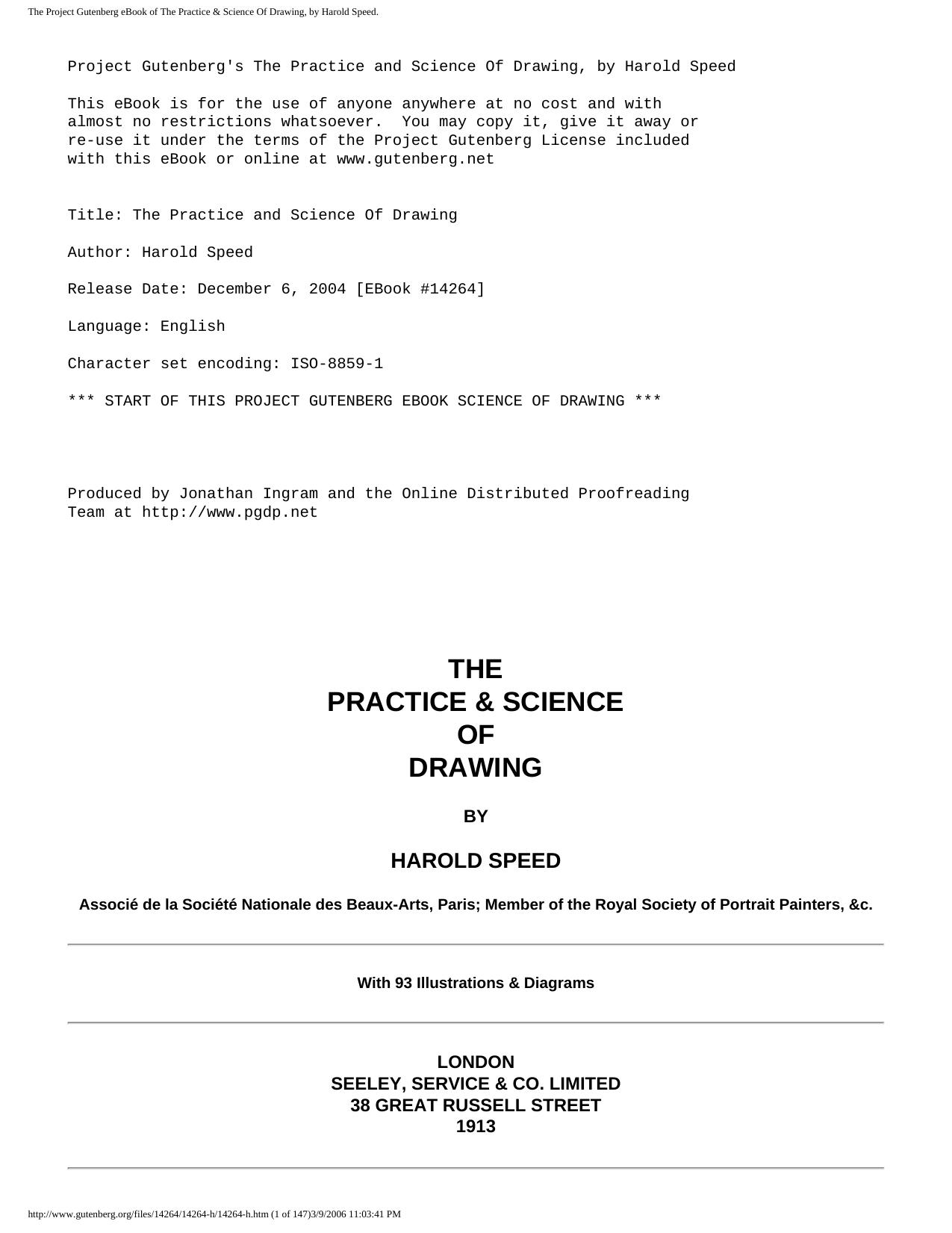The Practice and Science of Drawing by Harold Speed

Author:Harold Speed
Language: eng
Format: epub, pdf
ISBN: 9780486132372
Publisher: Dover Publications
Published: 2012-07-17T16:00:00+00:00
Diagram XIV (1)
ILLUSTRATING POWER OF CURVED
Diagram XIV (2)
LINES TO CONVEY ENERGY
Diagram XV
ILLUSTRATING THE FLOW OF LINES ON WHICH THE RHYTHMIC UNITY OF THIS PICTURE DEPENDS
Plate XXVII
Photo Anderson
THE BIRTH OF VENUS. BOTTICELLI (FLORENCE)
A beauthiful example of Botticelli’s refined line rhythm. (See diagram on opposite page for analysis.)
In both cases note the way the lines lead up to the principal subject, and the steadying power introduced by means of horizontal, vertical, and other straight lines. Veronese has contented himself with keeping a certain horizontal feeling in the sky, culminating in the straight lines of the horizon and of the sea edge. And he has also introduced two pyramids, giving straight lines in among the trees, the most pronounced of which leads the eye straight on to the principal head.
Botticelli has first the long line of the horizon echoed in the ground at the right-hand lower corner. And then he has made a determined stand against the flow of lines carrying you out of the picture on the right, by putting straight, upright trees and insisting upon their straightness.
Another rhythmic form the lines at the basis of a composition may take is a flame-like flow of lines; curved lines meeting and parting and meeting again, or even crossing in one continual movement onwards. A striking instance of the use of this quality is the work of the remarkable Spanish painter usually called El Greco, two of whose works are here shown (page 172). Whatever may be said by the academically minded as to the incorrectness of his drawing, there can be no two opinions as to the remarkable rhythmic vitality of his work. The upward flow of his lines and the flame-like flicker of his light masses thrills one in much the same way as watching a flaring fire. There is something exalting and stimulating in it, although, used to excess as he sometimes uses it, it is apt to suffer from lack of repose. Two examples of his pictures are reproduced here, and illustrate his use of this form of movement in the lines and masses of his compositions. Nowhere does he let the eye rest, but keeps the same flickering movement going throughout all his masses and edges. The extraordinary thing about this remarkable painter is that while this restless, unrestrained form of composition makes his work akin to the rococo work of a later period, there is a fiery earnestness and sincerity in all he does, only to be matched among the primitive painters of the fourteenth and fifteenth centuries, and very different from the false sentiment of the later school.
Download
The Practice and Science of Drawing by Harold Speed.pdf
This site does not store any files on its server. We only index and link to content provided by other sites. Please contact the content providers to delete copyright contents if any and email us, we'll remove relevant links or contents immediately.
Draw-A-Saurus by James Silvani(2652)
The Artist's Way Workbook by Cameron Julia(2195)
Breaking the Habit of Being Yourself by Joe Dispenza(1906)
Art & Fear by David Bayles(1680)
Logo Design Love: A guide to creating iconic brand identities (Voices That Matter) by David Airey(1537)
Secret Teachings of a Comic Book Master by Heidi MacDonald(1369)
Facial Expressions by Mark Simon(1324)
How to Master the Art of Selling by Tom Hopkins(1305)
Modelling and Sculpture by Albert Toft(1287)
Anatomy and Perspective: The Fundamentals of Figure Drawing (Dover Art Instruction) by Charles Oliver(1259)
Chinese Brush Painting by Jane Evans(1248)
Art Lab for Little Kids (Lab Series) by Susan Schwake(1247)
Your Inner Critic Is a Big Jerk by Danielle Krysa(1234)
An Atlas of Animal Anatomy for Artists by W. Ellenberger(1215)
The New Creative Artist by Nita Leland(1208)
Trust the Process by Shaun McNiff(1182)
Paint Pouring by Rick Cheadle(1151)
Watercolor Made Simple with Claudia Nice by Claudia Nice(1150)
Anatomy by Joseph Sheppard(1146)
